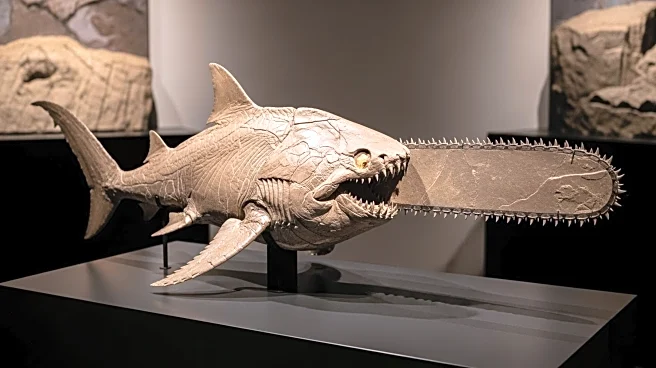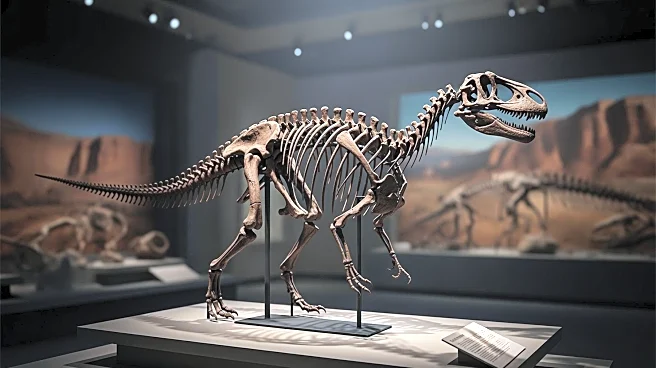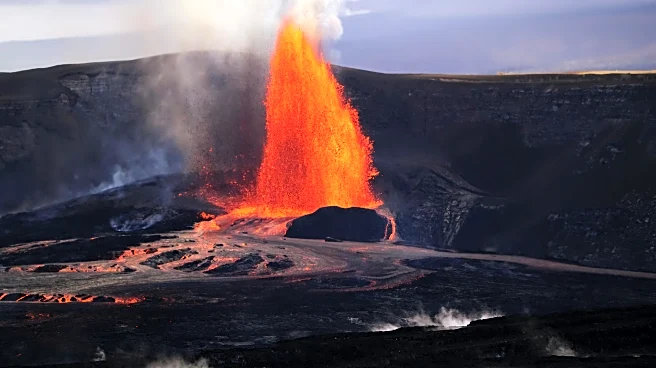What's Happening?
A recent study published in Nature has confirmed Nanotyrannus as a distinct species, ending decades of debate among paleontologists. The study, led by Lindsay Zanno and James Napoli, analyzed the Dueling
Dinosaurs fossil, revealing anatomical differences between Nanotyrannus and Tyrannosaurus rex. The research found that Nanotyrannus had longer arms, more teeth, and distinct skeletal features, supporting its classification as a separate species. The study also identified a new species, Nanotyrannus lethaeus, based on the anatomy of a specimen named Jane. The findings challenge previous assumptions about juvenile T. rex specimens and necessitate a reassessment of tyrannosaur classification.
Why It's Important?
The confirmation of Nanotyrannus as a distinct species has significant implications for paleontology and our understanding of dinosaur evolution. It prompts a reevaluation of tyrannosaur classification and the biology of T. rex, impacting studies on locomotion, growth, and diet. The discovery of multiple Nanotyrannus species suggests a diverse ecosystem during the Cretaceous period, raising questions about predator coexistence and competition. The study exemplifies the scientific process of revising theories based on new evidence, highlighting the dynamic nature of paleontological research. The findings may influence future studies and public interest in dinosaur science.
Beyond the Headlines
The study's implications extend beyond paleontology, affecting cultural perceptions of dinosaurs and their portrayal in media. The confirmation of Nanotyrannus challenges the iconic image of T. rex as the sole tyrant of its era, introducing a new narrative of diverse predatory species. The research underscores the importance of preserving fossils for scientific study, as private ownership can hinder access to valuable specimens. The findings may inspire further exploration of dinosaur ecosystems and evolutionary pathways, contributing to a deeper understanding of prehistoric life and its impact on modern biodiversity.












